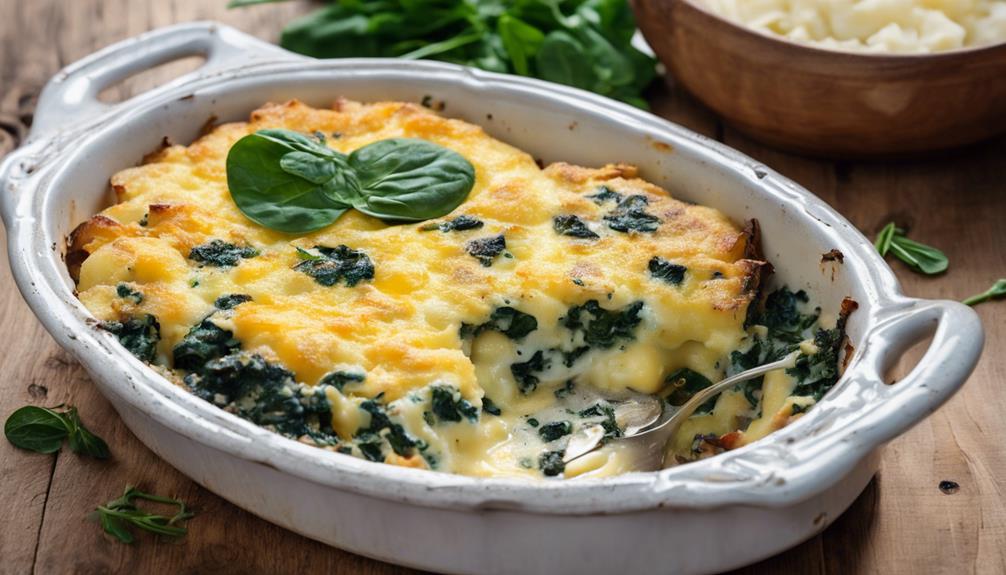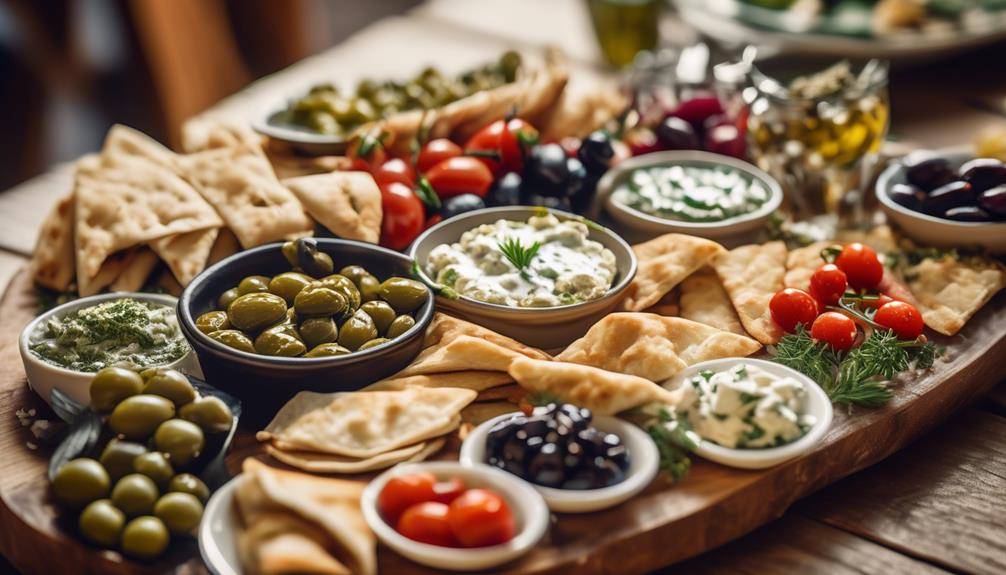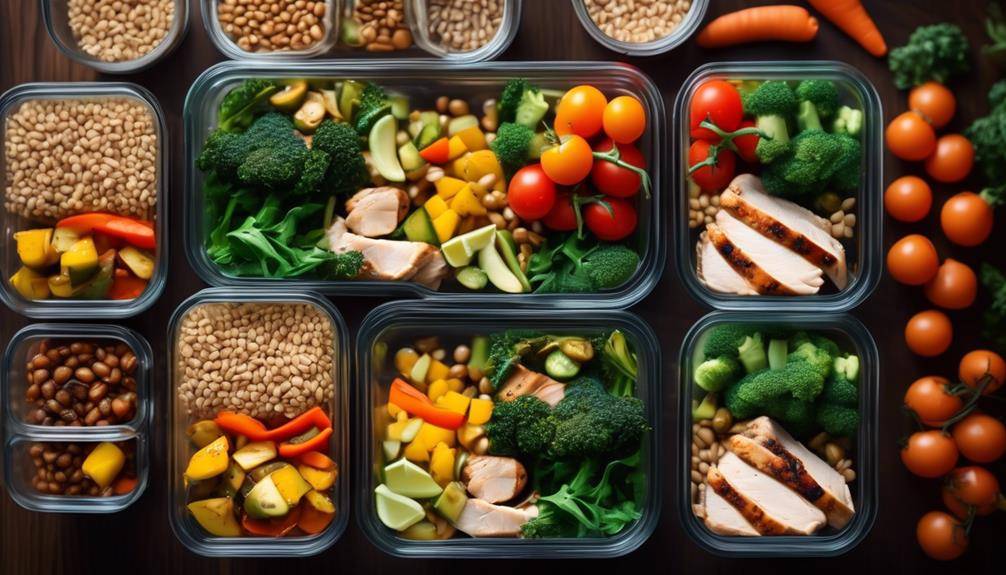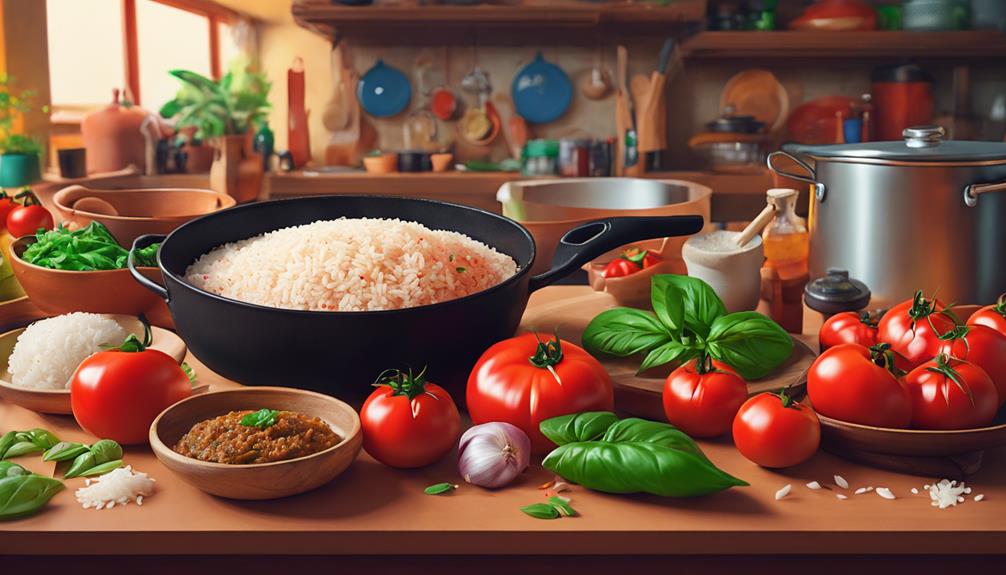Discover The Amazing Global Influences On Jamaican Cuisine

Discover The Amazing Global Influences On Jamaican Cuisine that reflect the island’s dynamic history. You’ll find indigenous Arawak ingredients like cassava alongside bold African spices that create unique flavors. European techniques brought baking and preservation methods, enhancing traditional dishes. Asian influences introduce exciting spices and cooking techniques, bringing new depth to the cuisine. Each ingredient and cooking style tells a story of migration and cultural exchange, forming a rich culinary tapestry. As you explore this vibrant food landscape, you’ll uncover even more fascinating connections and delicious surprises waiting to be discovered.
Indigenous Roots of Jamaican Food
Exploring the indigenous roots of Jamaican food reveals a rich tapestry of flavors and traditions that have shaped the island’s cuisine. The Arawak people, among the first inhabitants of Jamaica, brought with them a wealth of knowledge about agriculture, which has greatly influenced the local food system. You’ll find that Taino agriculture focused on cultivating staple crops like cassava, maize, and sweet potatoes. These ingredients not only formed the backbone of their diet but also set the stage for what would evolve into Jamaican culinary practices.
As you immerse yourself in these Arawak traditions, you’ll notice how their methods of cooking and food preservation have left a lasting mark. For instance, the use of cassava in various forms, including flatbreads and porridges, showcases their ingenuity and adaptability. The Tainos also practiced a form of agroforestry, utilizing the land sustainably, which allowed them to thrive in harmony with nature.
When you enjoy traditional Jamaican dishes today, you’re tasting a rich history that echoes through generations. The blend of indigenous flavors and techniques with later influences creates a unique culinary identity. By appreciating these indigenous roots, you not only savor the flavors but also acknowledge the resilience and creativity of the Arawak and Taino people, whose agricultural practices laid the foundation for Jamaica’s vibrant food culture. So next time you indulge in a Jamaican meal, think about the indigenous stories behind those delicious bites.
African Culinary Heritage
African culinary heritage greatly enriches Jamaican cuisine, bringing a vibrant array of flavors and techniques that have been embraced and adapted over generations. You can see this influence in the diverse flavor profiles that characterize many Jamaican dishes, from spicy jerk chicken to savory callaloo. These flavors stem from African foodways, where the use of bold spices and herbs plays a significant role in cooking.
The culinary traditions of African descent extend beyond just ingredients. They encompass food preservation methods, such as drying and smoking, that have been essential in maintaining food quality. These practices often reflect the ingenuity born from necessity during historical migrations. You might also notice the ritualistic aspect of cooking in Jamaican households, where cooking rituals are performed to honor ancestors and celebrate cultural identity.
Communal dining is another cornerstone of African heritage in Jamaica. Meals are often shared during seasonal gatherings, reinforcing bonds among family and friends. The symbolism of ingredients plays an important role, too; certain foods carry specific meanings that connect people to their roots. For instance, dishes made with yams or okra often signify prosperity and fertility.
European Contributions to Flavors
Incorporating a variety of ingredients and cooking techniques, European influences play a significant role in shaping Jamaican cuisine. The colonial impact of European powers, particularly the British, introduced new flavors and ingredients that have become staples in Jamaican cooking. You might notice that many traditional Jamaican dishes, such as stews and pastries, bear the marks of British culinary traditions.
One of the most notable contributions is the use of spices and herbs. Europeans brought in seasonings like thyme, allspice, and nutmeg, enriching the flavor complexity of Jamaican dishes. These ingredients not only enhance taste but also reflect a culinary exchange that transformed local cooking methods. You can find thyme in jerk marinades, a prime example of how these flavors meld with indigenous techniques.
The influence extends to baking as well. The introduction of flour and sugar led to the creation of beloved Jamaican desserts like rum cake and duff. You might find that these sweet delights have a distinctly European flair while still embodying the island’s unique character.
Moreover, the practice of curing and preserving meats, such as the famous saltfish, showcases the European impact on food preservation methods. This technique not only catered to the need for long-lasting ingredients but also added a savory depth to various Jamaican dishes.
Asian Influences on Cooking
When you think about Jamaican cuisine, Asian influences play a significant role in shaping its flavors. You’ll notice the vibrant spice infusions and cooking techniques that add depth to traditional dishes. Plus, the adaptation of noodle dishes showcases how these culinary traditions blend seamlessly into the Jamaican food landscape.
Spice Infusions and Techniques
Jamaican cuisine bursts with vibrant flavors, and Asian influences have played a pivotal role in shaping its spice infusions and cooking techniques. You can see this blend in the creative use of spice combinations, where traditional Jamaican spices like allspice meld with Asian staples such as ginger, garlic, and chili. This fusion not only enhances the depth of flavor profiles but also adds an exciting twist to familiar dishes.
When you explore Jamaican cooking, you’ll notice how Asian techniques like stir-frying and steaming have been embraced. These methods help maintain the fresh qualities of ingredients and allow spices to shine without overpowering the dish. For instance, using a quick stir-fry technique can bring out the aromatic qualities of scallions and peppers, making them integral to your meal.
Moreover, the incorporation of soy sauce and sesame oil introduces umami elements, enriching the overall taste experience. By experimenting with these spice infusions and techniques, you’ll discover how seamlessly Jamaican cuisine has integrated Asian elements, creating a unique culinary tapestry that’s both familiar and exotic. Immerse yourself in this flavorful world, and you’ll never look at Jamaican dishes the same way again!
Noodle Dishes Adaptation
Embracing the rich culinary heritage of both Jamaica and Asia, noodle dishes have undergone an exciting transformation that showcases this fusion. You’ll find that traditional Jamaican ingredients blend seamlessly with Asian noodle variations, creating unique and flavorful meals. Imagine the texture of ramen or rice noodles paired with jerk seasoning, giving you a taste explosion that’s both familiar and new.
In your quest for deliciousness, you might encounter dishes like curry noodle soup, where spicy Jamaican curry meets the comforting embrace of a noodle broth. This dish highlights how global inspirations can lead to delightful culinary creations. Additionally, you can try stir-fried noodles tossed with callaloo and snapper, a dish that celebrates the island’s seafood while embracing Asian cooking techniques.
As you explore Jamaican noodle adaptations, you’ll notice how they reflect the diversity of cultures that have influenced the island. Each bite tells a story of migration and shared culinary practices, making your dining experience a journey through flavors. So, don’t hesitate to plunge into these innovative dishes that beautifully unite the best of both worlds.
The Role of Spices
When you think about Jamaican cuisine, spices are at the heart of it all. Key ingredients like allspice and Scotch bonnet peppers not only add flavor but also reflect the rich cultural influences that shape the island’s dishes. Understanding these spices helps you appreciate the unique culinary identity of Jamaica.
Key Spice Ingredients
Spice blends are the heartbeat of Jamaican cuisine, infusing dishes with vibrant flavors and aromas that make every meal memorable. When you think of Jamaican cooking, you can’t overlook the fundamental spices that define its unique flavor profiles. Allspice, also known as pimento, stands out as a key ingredient, with its warm, sweet notes that complement a variety of meats and stews.
Thyme, both fresh and dried, adds a herbal touch, enhancing the depth of flavor in rice and jerk dishes. Don’t forget scotch bonnet peppers, which bring heat and a fruity undertone, creating bold spice pairings that excite your palate.
Garlic and ginger are also crucial, providing a sharpness that balances the richness of many Jamaican recipes. As you explore these key spice ingredients, you’ll discover how they work together to elevate traditional dishes. Each spice contributes its own character, allowing you to experiment with different combinations and create your own signature flavor profiles. So, whether you’re making curry or a classic jerk chicken, embrace these spices and let them transform your cooking experience.
Cultural Spice Influences
Throughout history, spices have played an essential role in shaping Jamaican cuisine and its cultural identity. You’ll discover that the vibrant flavor profiles stem from a rich tapestry of spice blends, each telling a story of historical influences. These blends reflect the island’s culinary traditions, which are as diverse as its people.
When you explore regional variations, you’ll notice how local ingredients impact the taste experiences unique to each area. For instance, the use of allspice and Scotch bonnet peppers in cooking rituals showcases the island’s strong connection to its agricultural roots.
Ingredient sourcing is important too, as many Jamaicans frequent spice markets to select seasonal ingredients, ensuring freshness and quality. This practice not only enhances their dishes but also connects them to the land and its bounty.
As you appreciate Jamaican cuisine, you’ll see how these cultural spice influences elevate everyday meals into extraordinary culinary experiences, celebrating the island’s history and the vibrant community that thrives within it. Embrace the spices, and you’ll taste the essence of Jamaica in every bite.
Popular Cooking Techniques
Jamaican cuisine is rich with vibrant flavors and diverse cooking techniques that reflect the island’s cultural heritage. You’ll find that various methods bring out the unique tastes of Jamaican dishes, making each meal an exciting experience.
One popular approach is grilling methods, which infuse smoky flavors into meats and vegetables, perfect for dishes like jerk chicken. Frying techniques are also widely used, providing crispy textures to everything from fried dumplings to fish fritters. If you prefer softer textures, you might enjoy the steaming practices common in preparing dishes like callaloo or steamed fish.
Baking styles are vital too, especially when it comes to making traditional breads or desserts. Roasting options, whether for meats or vegetables, add depth and richness to flavors, while sautéing approaches allow for quick cooking that retains the freshness of ingredients.
You can’t overlook boiling traditions, which are often used for preparing rice and peas or hearty soups. Pickling methods add a tangy kick to many dishes, preserving vegetables and enhancing flavors. Barbecuing styles, often seen during gatherings, offer a social cooking experience that gathers family and friends around the grill. Finally, marinating techniques, essential for infusing meats with spices, guarantee that each bite bursts with flavor.
Traditional Jamaican Ingredients
The vibrant flavors of Jamaican cuisine come from a variety of traditional ingredients that are integral to its identity. When you explore local markets in Jamaica, you’ll discover a stunning array of fresh, seasonal produce that forms the backbone of many dishes. Fruits like ripe mangoes, succulent pineapples, and sweet bananas not only add natural sweetness but also bring a tropical flair to your meals.
One of the staples you’ll encounter is the infamous Scotch bonnet pepper, known for its fiery heat and unique flavor. This pepper is a must-have in many traditional recipes, adding that quintessential Jamaican kick. You can’t forget about herbs and spices like thyme, allspice, and scallions, which elevate the taste of every dish.
Root vegetables play a significant role too. You’ll find ingredients like yam, cassava, and sweet potatoes, which are often used in hearty stews and side dishes. These ingredients not only provide sustenance but also reflect the agricultural heritage of Jamaica.
When you cook with local, seasonal produce, you’re connecting with the land and its history. It’s all about embracing what’s fresh and available. From colorful salads to rich curries, traditional Jamaican ingredients bring a depth of flavor to your culinary creations that’s hard to replicate. So next time you’re in the kitchen, consider the vibrant ingredients that make Jamaican cuisine a true celebration of culture and community.
Fusion Dishes and Modern Trends
Fusion dishes in Jamaican cuisine reflect a dynamic blend of traditional flavors and modern culinary trends, showcasing the island’s adaptability. As you explore local eateries and street food stalls, you’ll notice how chefs creatively combine Jamaican staples with global influences. Think jerk chicken tacos or curry goat empanadas—these dishes marry the island’s bold spices with techniques and ingredients from various cultures.
Culinary festivals across Jamaica celebrate this innovation, highlighting how fusion cuisine has become a vibrant part of the food scene. At these events, you’ll encounter an array of flavors, from sushi rolls infused with ackee to plantain chips served alongside hummus. It’s not just about fusing flavors; it’s about creating unique experiences that resonate with both locals and tourists.
Incorporating fresh, local produce into these fusion dishes is essential. Chefs often use seasonal fruits and vegetables, ensuring that each dish is not only flavorful but also reflects the island’s agricultural bounty. You’ll find that the creativity doesn’t stop at mains—desserts, too, are getting a modern twist. Imagine coconut cream pie infused with rum or a guava cheesecake that captures the essence of Jamaica.
Street food, in particular, is where these culinary experiments shine. Grab a bite from a food truck or vendor, and you might just discover your new favorite dish, perfectly blending Jamaican heritage with contemporary flair. The fusion trend keeps evolving, making Jamaican cuisine an exciting journey for your taste buds.
Celebrations and Food Culture
Celebrations in Jamaica are a vibrant tapestry woven with the threads of food culture, where every festival and gathering becomes an opportunity to indulge in traditional dishes. Whether it’s a family reunion or a cultural festival, the food at these events reflects the richness of Jamaican heritage. You’ll find that holiday feasts often include jerk chicken, curried goat, and rice and peas, all lovingly prepared using cherished family recipes.
During community gatherings, you’ll experience the warmth of culinary celebrations that bring people together. Food rituals play a significant role in these events, fostering a sense of belonging and connection. As you partake in these festive traditions, it’s not just about the dishes, but the stories and memories tied to each recipe.
Seasonal dishes, like festival and bammy, make their appearance during specific times of the year, showcasing the local produce and flavors. The vibrant colors and aromatic spices present in Jamaican cuisine are a feast for the senses, inviting everyone to savor each bite.
These celebrations also offer a chance to learn about the cultural influences that shape Jamaican cuisine. You’ll discover how various global cuisines have melded with local ingredients to create unique flavors. As you share in these culinary experiences, you’re not just enjoying a meal; you’re participating in a rich tradition that celebrates identity, community, and the joy of togetherness.
Frequently Asked Questions: Global Influences On Jamaican Cuisine
What Are the Health Benefits of Traditional Jamaican Ingredients?
Traditional Jamaican ingredients boast high nutritional value, offering benefits like improved digestion and enhanced immunity. By exploring their ingredient origins, you’ll discover how these components contribute to a balanced diet and overall well-being.
How Has Jamaican Cuisine Influenced Global Culinary Trends?
You’ll notice Jamaican cuisine’s vibrant flavors inspire culinary fusion worldwide. Chefs embrace its spices and techniques, leading to global adaptations in dishes. This cross-cultural exchange enriches menus, showcasing Jamaica’s impact on international culinary trends.
Are There Vegetarian or Vegan Jamaican Dishes?
You’ll find plenty of vegetarian and vegan Jamaican dishes. They often include vegetable staples like callaloo and yams, with delicious plant-based variations of traditional meals, ensuring you enjoy the rich flavors without meat.
What Are Some Popular Jamaican Desserts?
When you explore popular Jamaican desserts, you’ll find delicious options like rum cake, gizzada, and tropical fruit tarts. These dessert variations often highlight the island’s vibrant tropical fruits, creating flavors that are truly unforgettable.
How Can I Recreate Authentic Jamaican Dishes at Home?
To recreate authentic Jamaican dishes at home, use traditional spice blends like jerk seasoning and master cooking techniques like slow cooking or grilling. Experiment with fresh ingredients to capture the island’s vibrant flavors in your meals.
Conclusion
In exploring Jamaican cuisine, you’ve uncovered a vibrant tapestry woven from indigenous roots, African heritage, European flavors, and Asian spices. Each influence adds a unique layer to the dishes you love. You’ve seen how traditional ingredients and modern fusion create a dynamic food culture that celebrates both history and innovation. So next time you savor a Jamaican meal, remember the global journey that brought those flavors to your plate and the rich stories behind each bite.








